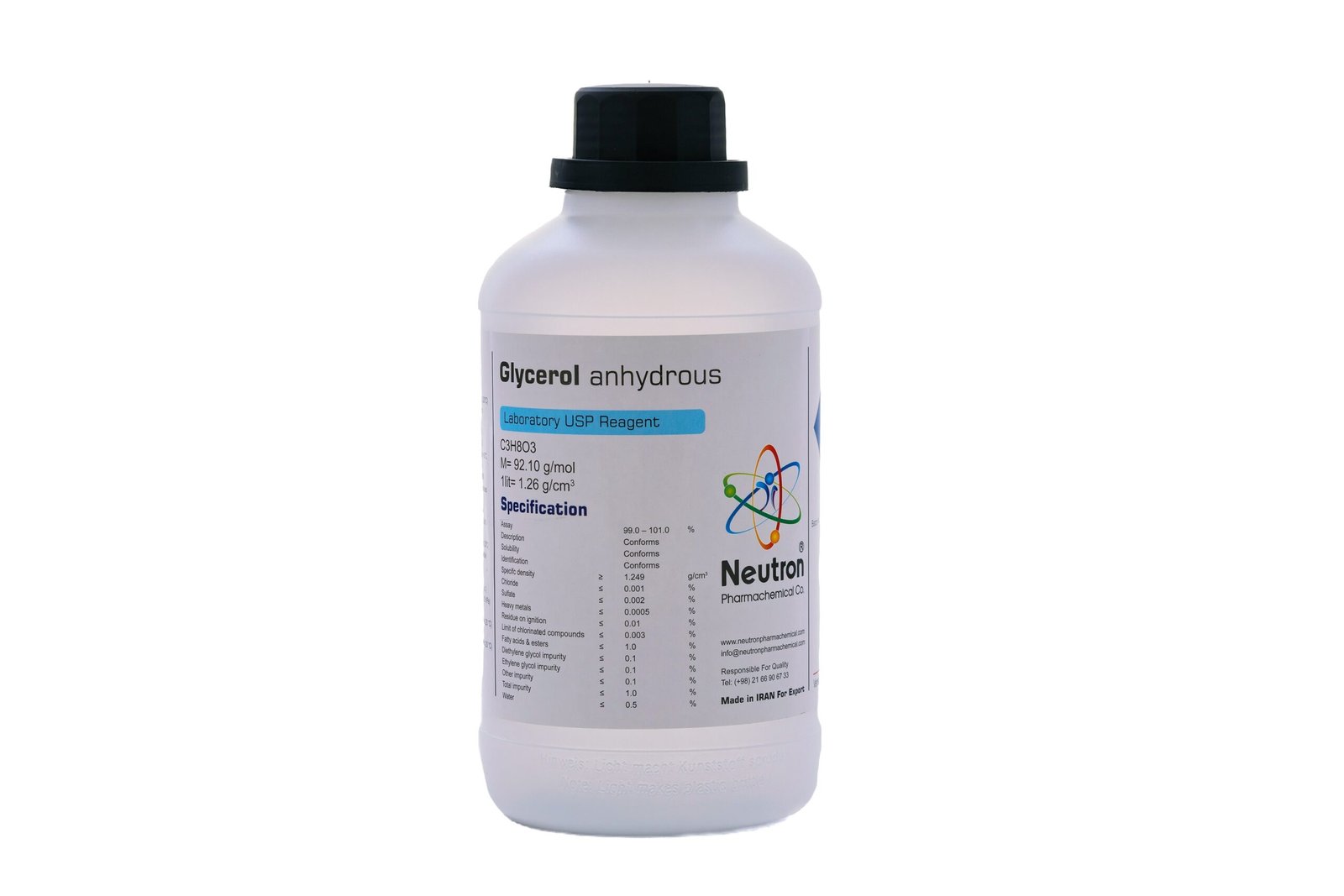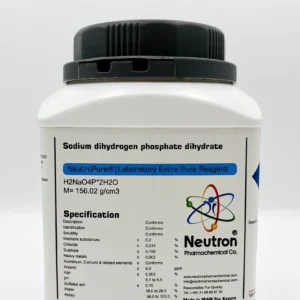Glycerol
| Formula: | C3H8O3 |
| Density: | 1.26 g/cm3 (20°C) |
| Molar mass: | 92.10 g/mol |
| CAS number: | 56-81-5 |
| HS code: | 29054500 |
| EC number: | 200-298-5 |
| Storage : | at +5°C to +30°C. |
| SDS | available |
| RTECS: | MA8050000 |
| Odour: | almost odourless |
| Form: | liquid |
| Color: | colourless |
| Explosion limit: | 2.6 – 11.3 Vol % |
| Ignition temperature: | 400°C |
| PH value: | ~ 5 (100 g/l 20°C) |
| Solubility in water: | (20°C) soluble |
| Solubility in ethanol: | soluble |
| Solubility in chloroform: | insoluble |
| Flash point: | ~ 180 °C (o.c.) |
| Boiling point: | 290 °C (1013 hPa) |
| Melting point: | ~ 18 °C |
| Vapour pressure: | < 0.001 hPa (20 °C) |
| Thermal decomposition: | > 290 °C |
| Viscosity dynamical: | 1412 mPa*s (20 °C) |
| Assay | 99.0 – 101.0 | % | |
| Description | Conforms | ||
| Solubility | Conforms | ||
| Identification | Conforms | ||
| Specifc density | ≥ | 1.249 | g/cm3 |
| Chloride | ≤ | 0.001 | % |
| Sulfate | ≤ | 0.002 | % |
| Heavy metals | ≤ | 0.0005 | % |
| Residue on ignition | ≤ | 0.01 | % |
| Limit of chlorinated compounds | ≤ | 0.003 | % |
| Fatty acids & esters | ≤ | 1 | % |
| Diethylene glycol impurity | ≤ | 0.1 | % |
| Ethylene glycol impurity | ≤ | 0.1 | % |
| Other impurity | ≤ | 0.1 | % |
Glycerol, also known as glycerin or glycerine, is a simple polyol compound. It is a colorless, odorless, viscous liquid with a sweet taste and is non-toxic. Glycerol is widely used in food, pharmaceutical, and cosmetic industries due to its humectant, solvent, and sweetening properties.
🏭⚗️ Production
Glycerol is produced as a byproduct in the saponification (soap-making) process and during biodiesel production from fats and oils. It can also be synthesized from propylene via chemical processes like epichlorohydrin hydrolysis.
🔬 Properties
Glycerol is highly hygroscopic and miscible with water and alcohols. It has three hydroxyl groups, making it useful in forming esters and other derivatives. It is stable, non-volatile, and has a high boiling point (290 °C).
🧪 Applications
• Food industry: Used as a humectant, sweetener, and preservative (E422) in baked goods, candies, and beverages.
• Pharmaceuticals: Acts as a solvent, lubricant, and humectant in syrups, suppositories, and capsules.
• Cosmetics and personal care: Commonly used in creams, lotions, toothpaste, and soaps for its moisturizing effect.
• Industrial uses: Applied in antifreeze formulations, plastics, resins, and as a chemical intermediate.







